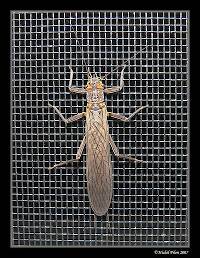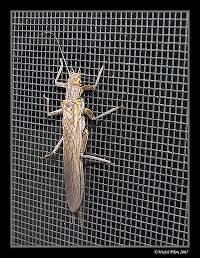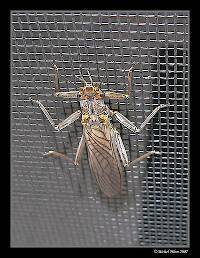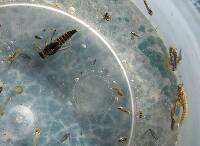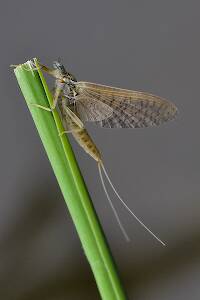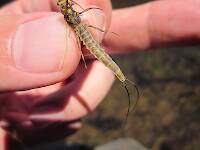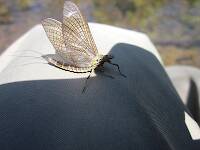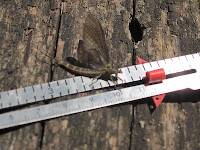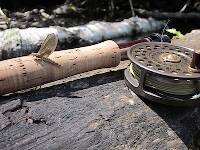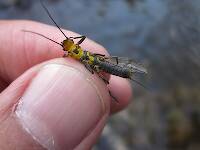
Hex Mayflies
Hexagenia limbata
The famous nocturnal Hex hatch of the Midwest (and a few other lucky locations) stirs to the surface mythically large brown trout that only touch streamers for the rest of the year.
Featured on the forum

Nymphs of this species were fairly common in late-winter kick net samples from the upper Yakima River. Although I could not find a key to species of Zapada nymphs, a revision of the Nemouridae family by Baumann (1975) includes the following helpful sentence: "2 cervical gills on each side of midline, 1 arising inside and 1 outside of lateral cervical sclerites, usually single and elongate, sometimes constricted but with 3 or 4 branches arising beyond gill base in Zapada cinctipes." This specimen clearly has the branches and is within the range of that species.

Troutnut is a project started in 2003 by salmonid ecologist Jason "Troutnut" Neuswanger to help anglers and
fly tyers unabashedly embrace the entomological side of the sport. Learn more about Troutnut or
support the project for an enhanced experience here.
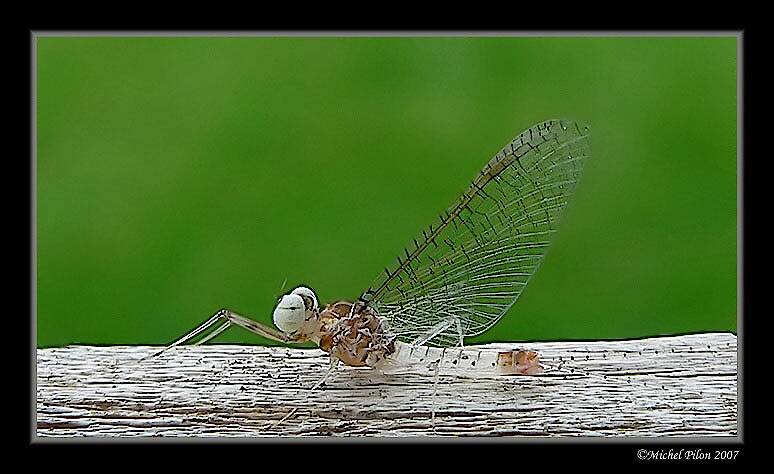
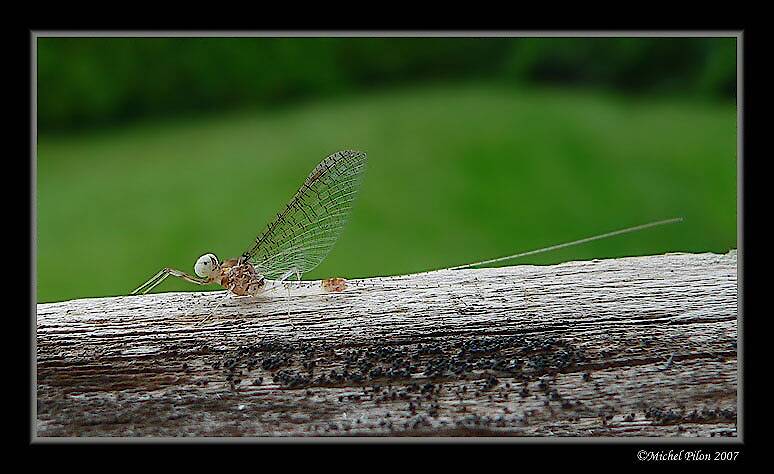
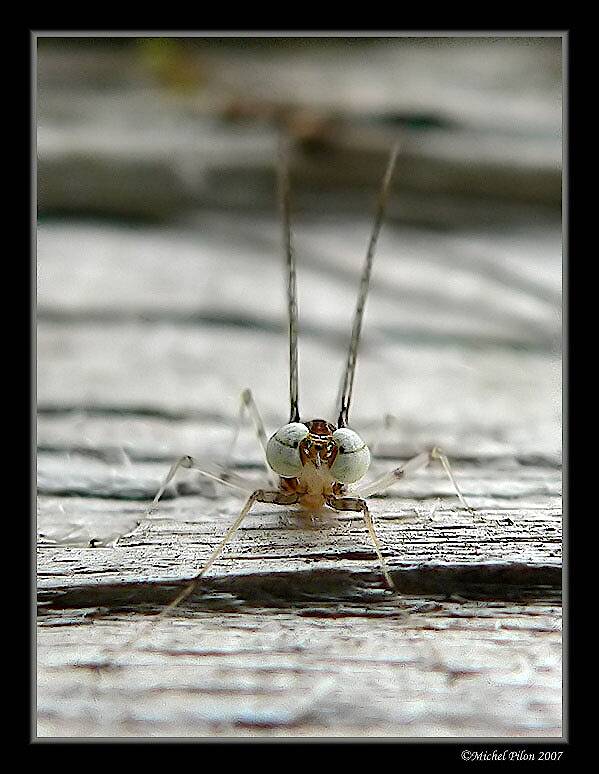
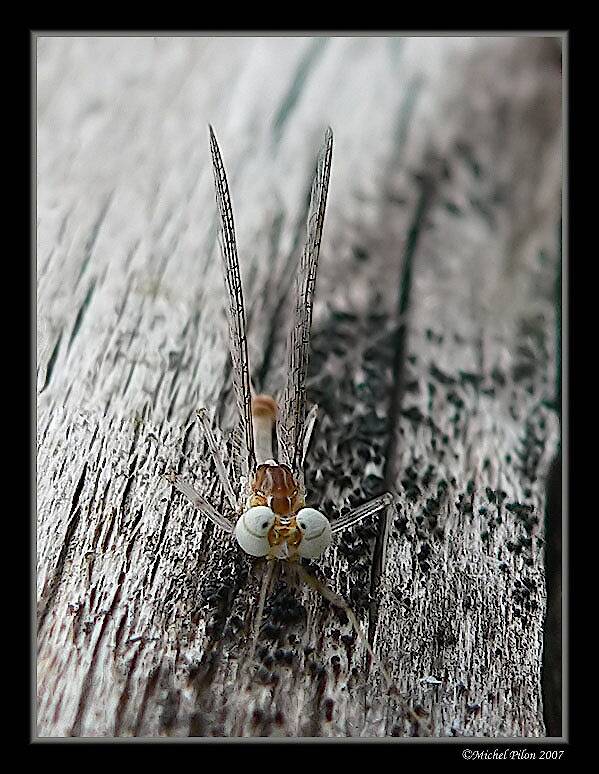
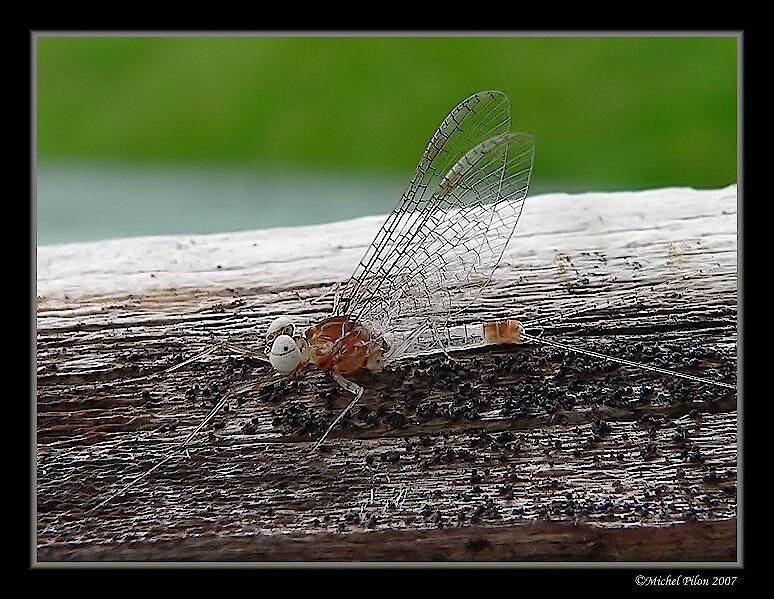
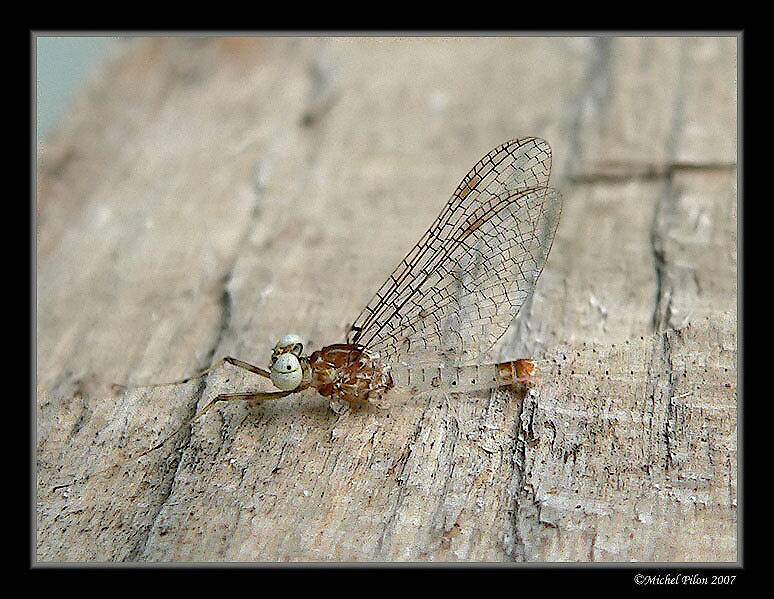

Pilonm on Oct 1, 2007October 1st, 2007, 3:46 am EDT
Hello,
Here are some pictures of a Mayfly I photographied last June 25th in Sherbrooke, Quebec, Canada (near Vermont).
Do you have any idea about the family/genum/species???
I suspect a Heptageniidae, maybe Maccaffertium but I'm not sure...
Any ideas???
Thank you!
Michel
Here are some pictures of a Mayfly I photographied last June 25th in Sherbrooke, Quebec, Canada (near Vermont).
Do you have any idea about the family/genum/species???
I suspect a Heptageniidae, maybe Maccaffertium but I'm not sure...
Any ideas???
Thank you!
Michel
Troutnut on Oct 1, 2007October 1st, 2007, 5:34 am EDT
It is Maccaffertium. I forget which species have transparent abdomens apart from terminatum. It looks very similar to that one but I vaguely remember something about the character of the dark posterior band on the tergites being necessary to distinguish it from some other very close species or another, and yours isn't banded in quite the same way as my terminatum specimen. It's close, though. That could be it.
Jason Neuswanger, Ph.D.
Troutnut and salmonid ecologist
Troutnut and salmonid ecologist
Taxon on Oct 1, 2007October 1st, 2007, 10:21 am EDT
Michel-
My guess would be Maccaffertium mediopunctatum mediopunctatum, the one formerly classified as Stenonema nepotellum. However, another possibility would be M. pulchellum, as both have stigmatic dots, and are present in Quebec.
My guess would be Maccaffertium mediopunctatum mediopunctatum, the one formerly classified as Stenonema nepotellum. However, another possibility would be M. pulchellum, as both have stigmatic dots, and are present in Quebec.
Grannom on Oct 1, 2007October 1st, 2007, 10:38 am EDT
I absolutly cannot help with the identification, but those are Incredible pictures! Beautiful
Mike
Mike
"Be calm - you're there..." "...Tell yourself there's no rush, even if there is."
-John Gierach
-John Gierach
Jmd123 on Oct 9, 2007October 9th, 2007, 2:44 pm EDT
Hey guys, I think I saw one of these little buggers today - and much to my surprise. I was working on a tree survey along the lower Rouge River - one of the common responsibilities of my job - and a tiny little thing very strongly resembling this insect landed on the screen of my GPS datalogger (might actually be M. terminatum - looked at those pictures too). Having looked at these photos last night or the night before, I knew what I had sitting in front of me. I have my doubts that it actually came out of the river - it is TERRIBLY polluted with raw sewage overflow on a very regular basis (this is in fact why I am working out there - we are doing a natural resources assessment of the area in anticipation of some major sewer infrastructure improvements to keep the SHIT out of the river!). This site is actually in the middle of the Dearborn Hills Golf Course, and there are several ponds nearby. So, anybody know anything about the ecology of these critters? Are they stillwater insects, tolerant of warm nutrient-rich waters? I don't know of ANY higher-quality waters in the area. (I also saw a toad along the river, which I found reassuring - amphibians are "canaries in the coal mine" when it comes to aquatic ecosystems.)
Also, I must comment: WHAT A BEAUTIFUL CREATURE!!! (The MAYFLY that is, not the toad, although I find them rather cute - sort of what a human might look like if they could live to be around 500 years old).
Jonathon
P.S. Excellent photographs as well!
Also, I must comment: WHAT A BEAUTIFUL CREATURE!!! (The MAYFLY that is, not the toad, although I find them rather cute - sort of what a human might look like if they could live to be around 500 years old).
Jonathon
P.S. Excellent photographs as well!
No matter how big the one you just caught is, there's always a bigger one out there somewhere...
Pilonm on Oct 17, 2007October 17th, 2007, 8:15 am EDT
Thank you all for helping me to identify this mayfly!
It is really appreciated!
Thank you also for your comments about the pictures...
Have a nice day!
Michel
Quebec, Canada
It is really appreciated!
Thank you also for your comments about the pictures...
Have a nice day!
Michel
Quebec, Canada
Quick Reply
Related Discussions
Topic
Replies
Last Reply
10
Feb 27, 2012
by Oldredbarn
by Oldredbarn
3
Sep 4, 2012
by Entoman
by Entoman





